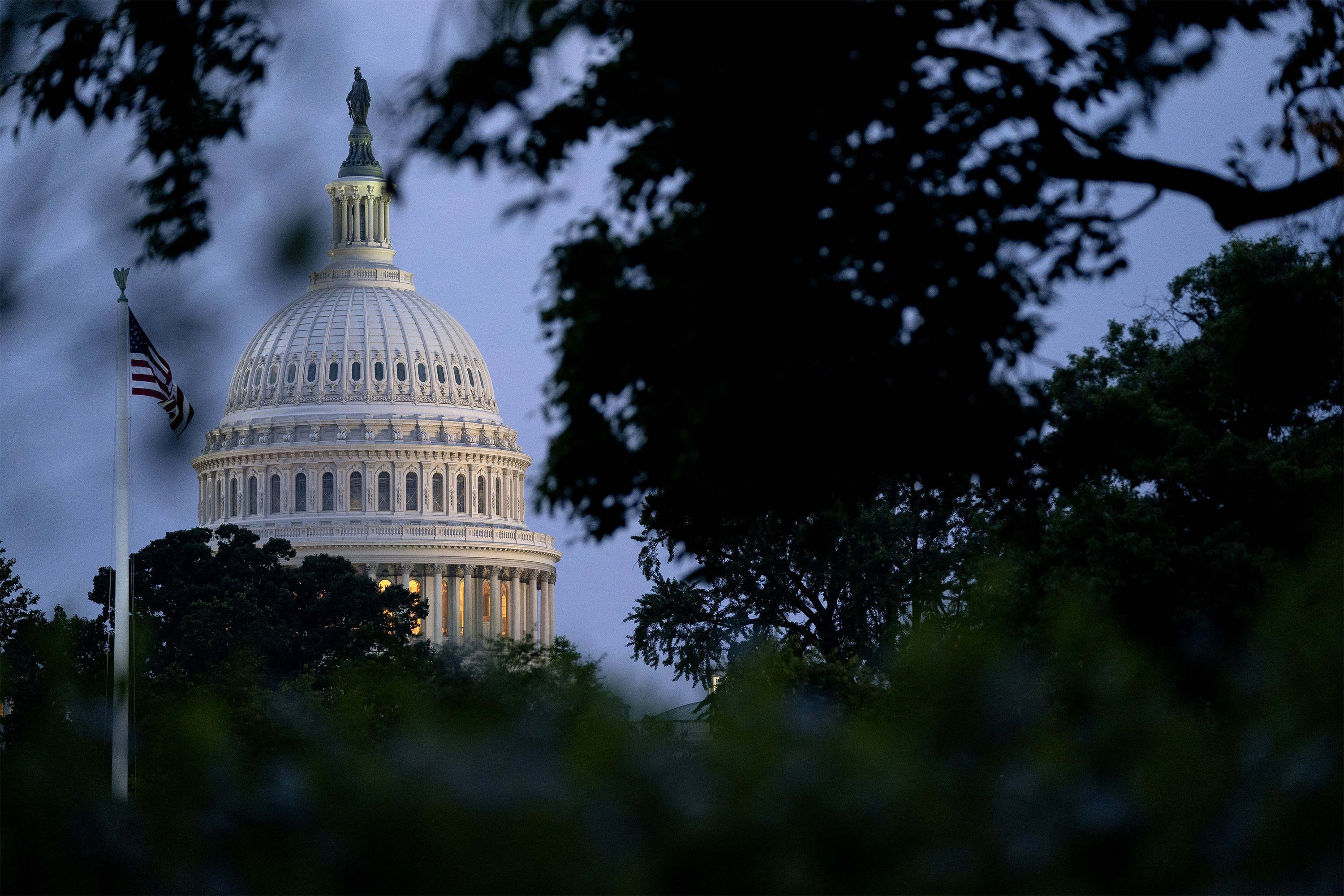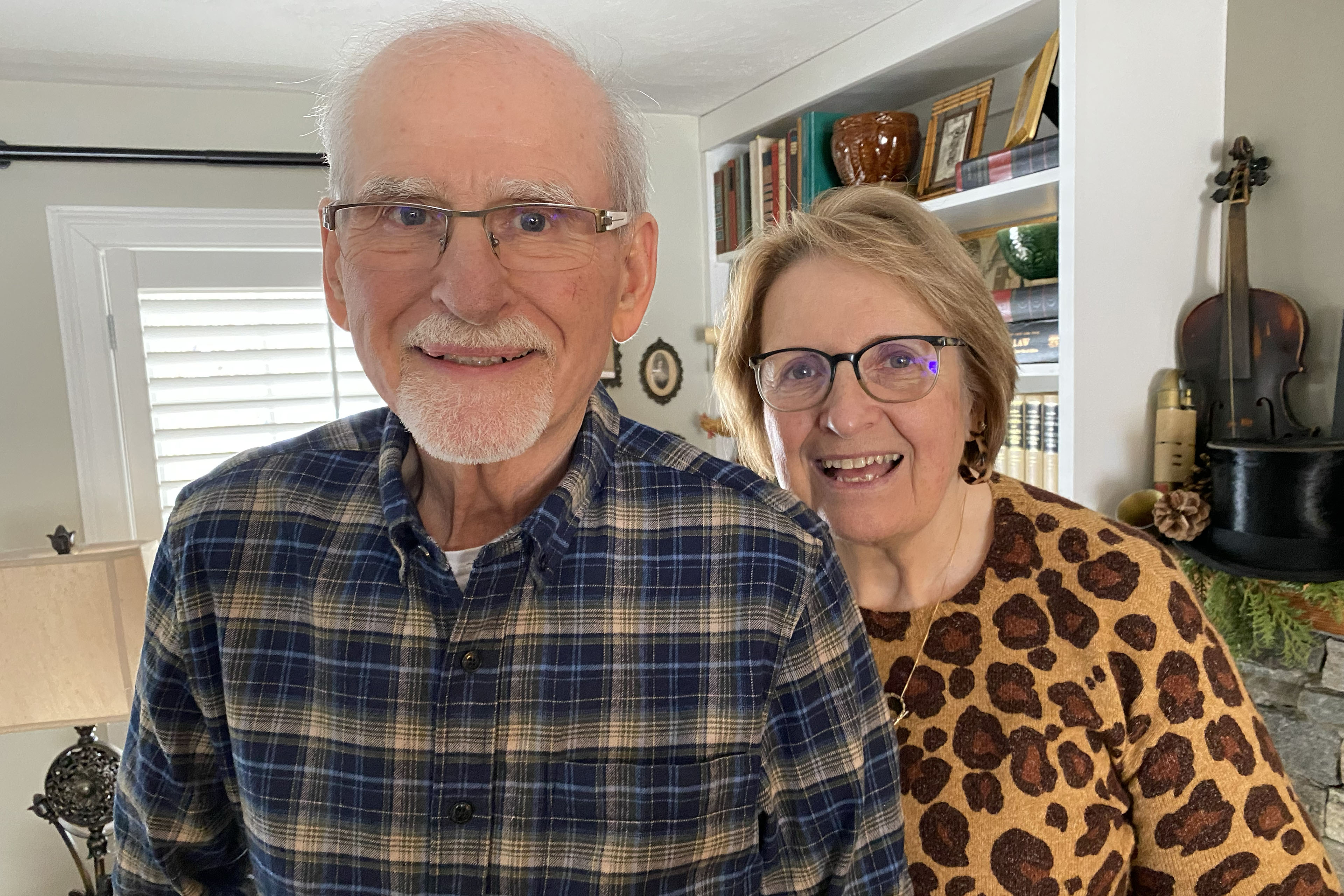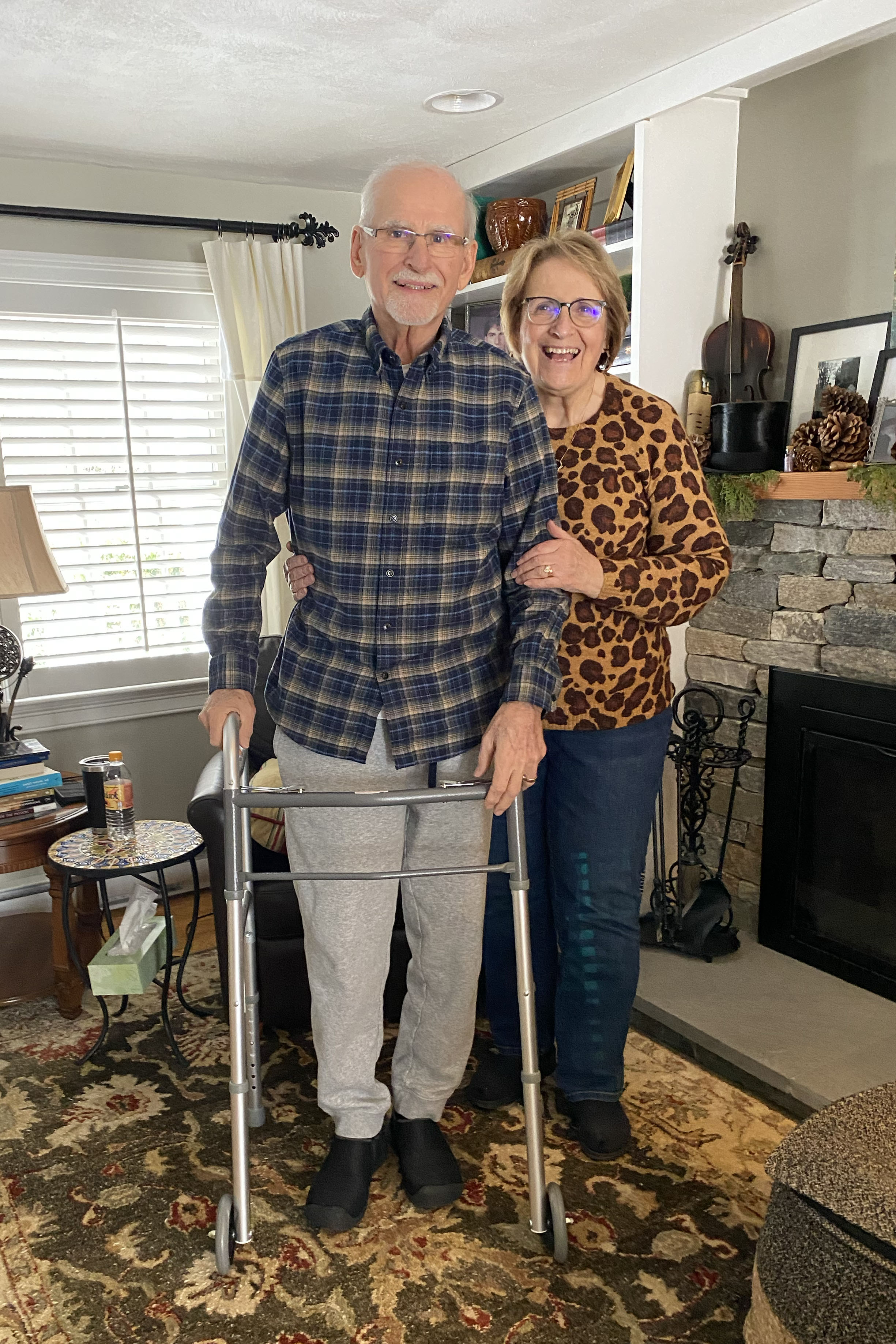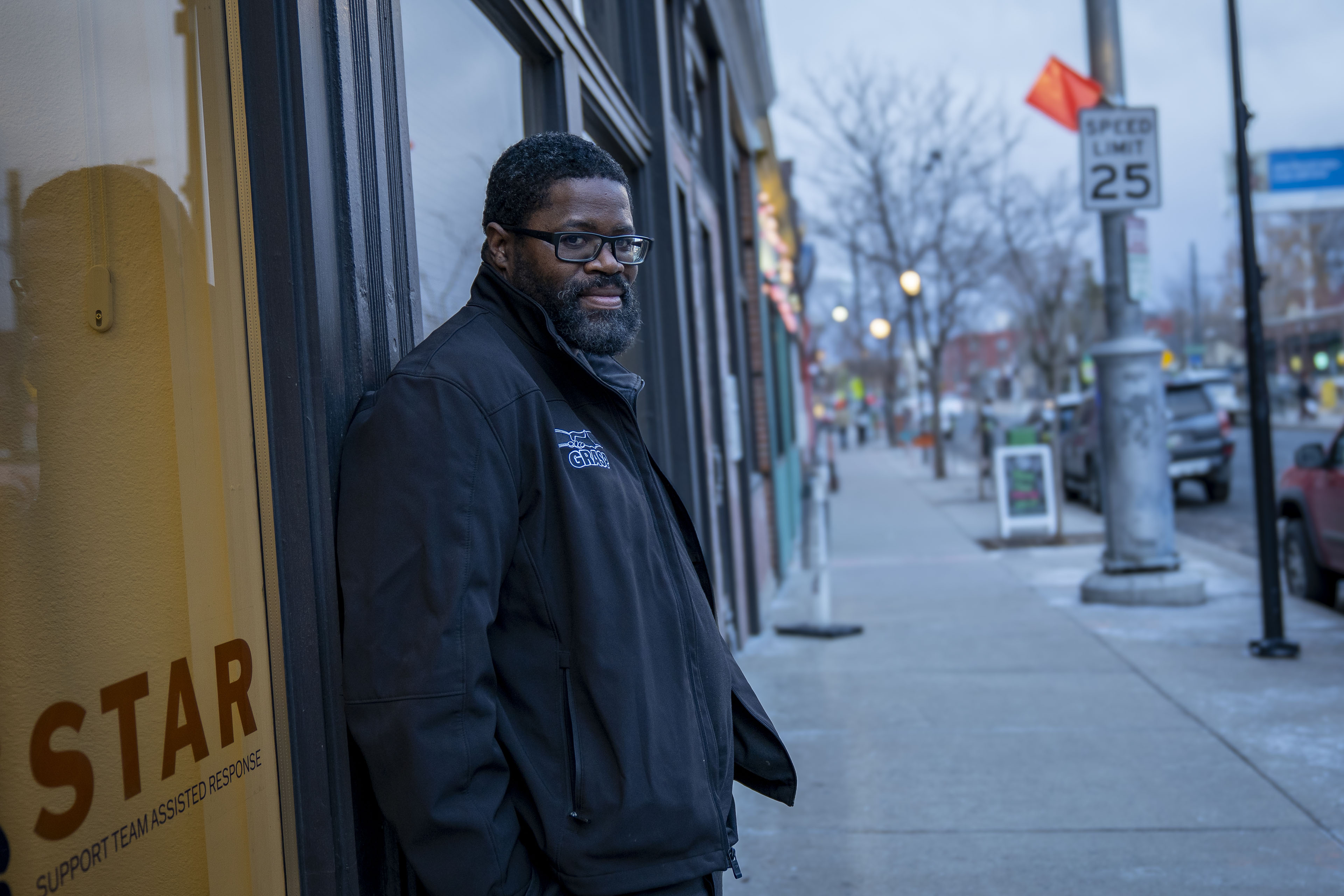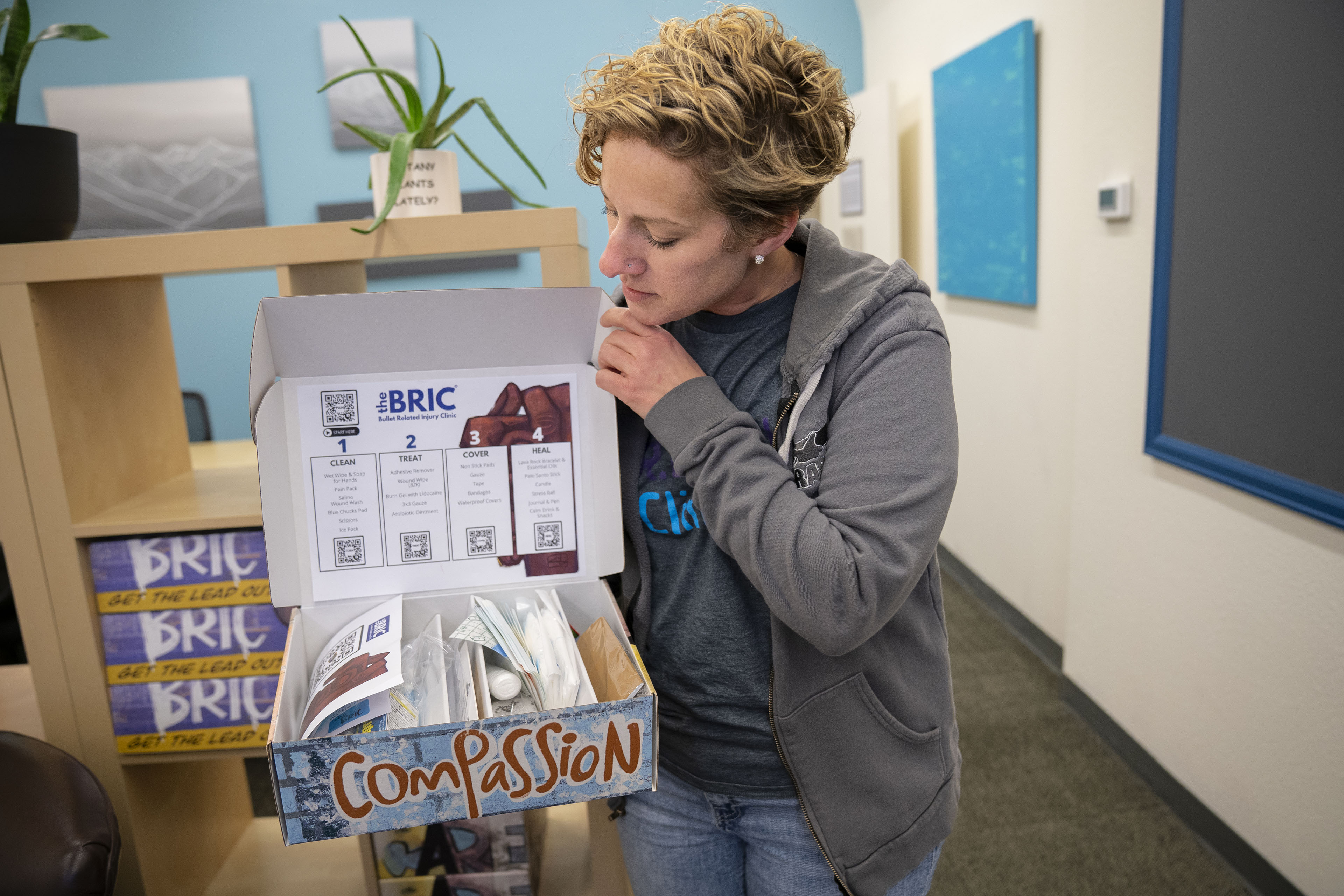Note: “An Arm and a Leg” uses speech-recognition software to generate transcripts, which may contain errors. Please use the transcript as a tool but check the corresponding audio before quoting the podcast.
Transcript: A medical-debt watchdog gets sidelined by the new administration
Dan: Hey there–
Lara Ceccarelli works for American Financial Solutions. That’s a non-profit credit counseling agency.
Lara spends her days talking with people who have bills they can’t pay, debt collectors chasing them, including for medical bills.
On a recent Sunday night, Lara was winding down her day the way she usually does.
Lara: I tend to read the news before bed. I usually find that it gives me less anxiety, uh, when I have a clear picture of, you know, what’s happening in the world and I don’t feel like I’m in the dark. And yeah, that Sunday was an exception.
Dan: That Sunday was February 9, and that evening big news had broken about the Consumer Financial Protection Bureau– C F P B, for short.
A federal agency that’s basically a watchdog for consumer rights of all kinds.
So, for years, whenever Lara’s talked to a client, and it sounds like a debt collector is violating their rights — which happens a lot– she has referred the client to the CFPB. And it has worked.
Lara: They’ve created these streamlined processes where consumers can submit complaints and see enforcement action taken right away.
Dan: But that Sunday night, February 9, news broke that an official President Donald Trump had put in charge of the CFPB was basically shutting the agency down. Effective immediately.
Agency staff had gotten a memo telling them to — stop working.
Lara: I felt my stomach sink through the floor. And my poor husband is active duty in the military, so he was preparing for a very long day the next day on his Navy ship, and he took one look at me and knew something was badly wrong,
Dan: What did your husband say?
Lara: He tried to tell me that it was all going to be okay. I think he was, uh, doing his best to be as supportive as he could.
Dan: How late were you up that night?
Lara: Oh, I didn’t sleep. I think I got maybe one or two hours of sleep. I Lay down and I, uh, looked at my awful popcorn ceiling and tried to sleep and just could not shut my brain off.
Dan: She was thinking about how important the CFPB has been– how many clients she’s referred to them.
I talked with Lara just over a week after that Sunday night. We’ll hear how she managed that first week, how she started shifting what she tells clients– what other resources she’s still referring them to.
And we’ll hear about a court case that has slowed down the Trump administration’s efforts to completely dismantle the CFPB. And where things COULD go from here.
But first, we should talk about why the CFPB has been such a big deal, especially for people with medical debts.
This is An Arm and a Leg, a show about why health care costs so freaking much, and what we can maybe do about it. I’m Dan Weissmann. I’m a reporter, and I like a challenge. So the job we’ve chosen on this show is to take one of the most enraging, terrifying, depressing parts of American life–and bring you a show that’s entertaining, empowering and useful.
We’re gonna hear about what the CFPB has done about medical debts from somebody who’s been working on this issue since the beginning.
Chi Chi Wu: My name is Chi Chi Wu. I’m a senior attorney at the National Consumer Law Center.
Dan: Actually, she’s been at this since before the beginning. Chi Chi Wu joined the National Consumer Law Center in 2001.
The Consumer Financial Protection Bureau started out a half dozen years later, in 2007– as an idea. A proposal from a law professor named Elizabeth Warren. She thought financial institutions needed a watchdog– or as she called it, “a cop on the beat.”
In 2008, financial institutions crashed the economy. Barack Obama became president. In 2010 Congress passed a law to put some new restrictions on financial institutions– the “Dodd Frank Wall Street Reform and Consumer Protection Act”– which mandated the CFPB’s creation.
Chi Chi Wu says it didn’t take long for medical debts to land in the agency’s cross-hairs..
Chi Chi Wu: In 2014, the Consumer Financial Protection Bureau did a study that found, if you look at the debt collection items on credit reports…
Dan: In other words,if you ask: When people get put in collections, what are the bills actually for?
Chi Chi Wu: …over half of them are for medical debt. Half. It was a huge number.
Dan: In other words, a ton of people had lousy credit scores, not because they’d taken a cruise they couldn’t pay for. But because they’d gotten sick.
Chi Chi Wu: It was a huge problem. People would try to be buying a house or a car trying to get a credit card and they’d have to pay more or even get turned down .
Dan: And now it was on the record, thanks to the CFPB.
The next year a bunch of state attorneys general reached a “voluntary agreement” with the big three credit bureaus — Equifax, Experian, TransUnion. The big three agreed that, they’d wait 180 days — six months — before putting a medical debt on somebody’s credit report.
Chi Chi Wu: So the idea was the consumer would have six months to straighten out the debt with insurance, figure out what they actually owed, maybe dispute it if they didn’t think they owed it.
Dan: Meanwhile, the CFPB was working on another problem.
Chi Chi Wu: Sometimes people would have items on their credit reports, especially for small dollar amounts that they never knew about until they went to buy a car or refinance their house.
Dan: This was called “parking,” and Chi Chi Wu says it was especially common with medical debts.
Chi Chi Wu: A debt collector would get a medical debt referred from a healthcare provider and they wouldn’t do anything with it.
They wouldn’t send a single letter. They wouldn’t make a single phone call. All they would do is report that debt to the credit bureaus and wait… would just wait until the consumer had to use their credit score for something, you know, refinance their mortgage, buy a car…
Dan: Rent an apartment. Apply for a job…
Chi Chi Wu: Yes, yes, all of those. And then, their credit would get pulled, this medical debt would show up. And they’d be left scrambling because they would have to clear that debt from their credit report before they could get that mortgage or car loan or job or apartment, and even if they were like, ‘I paid that, or insurance should have paid that,’ they didn’t have time to deal with it. Because if you’re in the middle of this big important transaction, you don’t have time to wait 30 days for a credit reporting dispute to be resolved. And often it takes longer.
Dan: So, people paid up. They didn’t have a choice.
Chi Chi Wu: And the reason debt collectors do that is because it’s cheap. It’s cheap to do credit reporting. It’s expensive to send a letter because it costs you, what is the price of a stamp right now?
Dan: 73 cents! Plus whatever it costs you to print it out and stuff. A guy who used to be a debt collector once told me sending a bill costs two bucks.
Chi Chi Wu says the CFPB started working on a rule banning “parking” during the second Obama administration. And finalized the rule in 2020, under Donald Trump. It takes a while.
When Joe Biden became President, he appointed a CFPB director who put extra focus on medical debts. The credit bureaus got the idea that they might be subject to some new rules on that topic, and volunteered to make some changes of their own.
In May 2022 they announced: Instead of waiting just six months to put medical bills on credit reports, they were gonna wait a full year.
Chi Chi Wu: Because six months sometimes is not enough to deal with an insurance dispute, right? I mean, sometimes it takes a lot longer. So they extended that to a year and then they agreed not to report medical debts under 500.
Dan: And that’s when I first talked with Lara Cecarelli for this show.
I was trying to figure out: Was it really a big deal? The debts would still be on the books — collectors could still bug people about them. And tons of debts would stay on credit reports.
Lara told me: YEP. That’s gonna be a big deal.
When we talked this month, she told me she could see the impact of the CFPB in her work day to day.
Lara: We’ve seen a huge decrease in the number of complaints from consumers, or difficulty that consumers are having with medical debt. It’s still something that we see. But you know, I used to have at least one conversation about medical debt a day, usually more, and that’s not the case. You know, I’m having a couple of conversations per week, maybe, about medical debt. So we’ve seen the impact.
Dan: And she could see more on the horizon:
In January, before the inauguration, the CFPB actually issued new rules about medical debt. Like we said, credit bureaus had already promised to remove everything below five hundred dollars.
Now, under the new rules, all medical debts would come off. And lenders couldn’t look at medical debts when they made lending decisions.
The CFPB had planned to start enforcing those rules in March.
Now– on that Sunday evening in February– Lara was seeing news: The whole agency was shutting down. Over the next few days, news outlets reported more than a hundred and fifty immediate layoffs — and the cancellation of more than $100 million in contracts. And rumors of much deeper cuts to come.
Lara started doing this job during the first Tump administration. She says, this sweeping change is not just a swing of the pendulum back to how things were then.
Lara: No, this is new territory. They were still robust, they were still responsive to client complaints. The enforcement and the protection was still there,
Dan: For right now, it’s gone. Coming up: What the first CFPB-free week was like for Lara and her colleagues. What she’s telling clients now. And what Chi Chi Wu and her colleagues are doing.
An Arm and a Leg is a co-production of Public Road Productions and KFF Health News — that’s a nonprofit newsroom covering health issues in America. KFF’s reporters do amazing work. We’re honored to work with them.
Lara Ceccarelli says she’s had to revise what she’s used to telling clients. Because referring people to the CFPB was a pretty regular part of herday to day works.
Lara: It makes a difference feeling like you’ve got a powerhouse at your back. You say, you know, the CFPB is incredibly solid, they will help support you. You know, all you have to do is reach out. They’re communicative, and they are robust, and I can’t say that anymore.
Dan: There’s still a website. There’s still a phone number.
Lara: But you’re not getting a person right now. You’re getting voicemails. So at this point, we’re still advising clients that the CFPB is, you know, an important agency But we’re also informing them that right now the CFPB is basically going dark,
Dan: So, she’s telling people: Hey, it’s worth calling the CFPB, just in case somebody picks up. But meanwhile here are some other places to call.
Lara: I had a client who had been threatened by a debt collector, and the debt that they’re collecting on is actually outside of the statute of limitations. It’s not collectible anymore. But they’re being harassed basically, you know, calling them at all hours of the day and night and advising them that, you know, they’re still subject to legal action, none of which is true.
Dan: Which means, Lara tells me, that collector is breaking a law called the Fair Debt Collection Practices Act.
Lara: And normally I would have sent that client in the direction of the CFPB.
Dan: Normally, you file a complaint with the CFPB, the company responds to you within 15 days, according to the agency’s website.
Lara says companies pay attention– because the CFPB has a big stick. In 2023, the agency shut down one medical-debt collection company for violating this very law.
That version of normal is gone for now. But Lara happens to know, the Federal Trade Commission — which is still up and running– also has authority to enforce that law. They’re not specialists, but they’ve got someone to answer the phones. So she encouraged her client to try them.
Other folks, she’s referring to their state attorney general’s office. In a lot of states, consumer-protection is a big part of the state AG’s job. Some state’s have independent consumer protection bureaus.
Lara and her colleagues respect the work they do.
But it’s not the same as having a powerful, national agency that enforces federal law.
Lara: You know, it wasn’t something where somebody in Ohio has a different set of rules from somebody in California as far as where you go and who you contacted. Centralized enforcement and made it really easy for everybody to know where to go to get help with their particular issue. All these other different places, can sort of take up a piece of the enforcement action , but none of them have that same robust power that the CFPB had, or the direct focus specifically on financial institutions and and their interactions with consumers directly.
Dan: Lara and her colleagues are still there. She says their funding comes from private organizations, not the feds.
Lara: We’re not worried about the lights going out here yet
We all tried to lift each other up and, you know, talk about the other resources that we have available, all of which are valuable. and we have to, you know, maintain some degree of equilibrium, when you’re speaking to clients that, you know, one of you could have a breakdown at a time, right?
And that’s never our turn. So, um, you know, you have to maintain some degree of optimism and positivity, because if you’re not optimistic and positive, for their outcomes. How can they possibly think there’s hope for the future?
Dan: Lara says she’s doing her best at work– and working on keeping her balance.
Lara: I’ve got a beautiful little paint mare that I ride um, and I get to go out and play with her whenever the, uh, news gets too bleak. Normally, she gets, uh, one or two days without, you know, having to put up with me, but right now the need is dire.
Dan: Meanwhile, Chi Chi Wu is fighting. On two fronts.
I mentioned earlier: Biden’s CFPB took a big parting shot in early January. The agency finalized a rule banning medical debts from credit reports.
That rule got hit immediately with lawsuits from ACA International — that’s the industry association for debt collectors — and the credit bureaus.
Chi Chi Wu and her colleagues at the National Consumer Law Center figured: The Trump Administration might not defend those lawsuits.
So they started preparing motions to intervene: basically asking the court’s permission to take over the defense. On the Sunday evening when Lara Ceccarelli read about the CFPB shutdown on the news, Chi Chi Wu was not watching the news.
Chi Chi Wu: I had been working like a mad woman that weekend
Dan: Drafting documents for that motion to intervene.
Chi Chi Wu: So I was kind of busy all weekend, writing, not watching the Super Bowl
Dan: She got word from colleagues that Trump’s people had shut down the CFPB, and she was like, “OK. That going into this document I’m writing..”
Chi Chi Wu: …Because that was more support saying, well, the, this new CFPB is not going to defend this rule and so you should let us defend the rule.
Dan: Let us — the NCLC — defend the rule in court.
So OK, that was material for her fight on one front. But of course it opens up another front, another legal battle.
In this one, NCLC is actually a plaintiff — along with a union representing CFPB employees, and a couple other non profits. On February 13– four days after the CFPB went dark — they asked a federal judge, basically to stop the CFPB shutdown.
The next day, the judge issued a temporary order, telling the CFPB to hold off on three things:
One. No more mass firings.
Two: Don’t destroy data — or take data down from public websites.
And three: Don’t return money to congress.
That order lasts just over two weeks, then there’s a hearing scheduled. That’s happening a few days after we publish this episode, and we’ll be watching. .
The other lawsuit, about the CFPB’s rule on medical debt– it’s on a slower timetable.
Meanwhile, Chi Chi Wu says there are other fronts to fight on, and not just for her.
Chi Chi Wu: This is where states can step in and protect the consumers in their state. Nine states have already banned medical debt from credit reports. New York, Colorado, California, Rhode Island, even Virginia — a purple state. And so, if your listeners are wondering what can they do — I mean, you know, obviously contact their members of Congress to support the CFPB — but also, you know, if they are in a state that doesn’t have one of these laws, they can try to get their state legislatures to pass a law to protect them from medical debts on credit reports.
Dan: We are gonna do our best to stay on top of this story.A few days after we publish this episode, there’ll be that hearing in federal court on the lawsuit opposing the CFPB’s shutdown.
I’ll post updates on the social networking site BlueSky — it’s kind of a Twitter substitute, and you can find me there at danweissmann (spelled with two esses and two enns)
Next week’s First Aid Kit newsletter will include a roundup of what we know, and what resources are available. If you’re not signed up for First Aid Kit yet, just head to arm and a leg show, dot com, slash, first aid kit.
And we’ll be back in a few weeks, with an episode about one listener’s fight — successful fight — against a six thousand dollar charge.
Megan: I didn’t need to be an expert on this. I just needed to have access to the tools and the podcast would remind me of them. So I was like, okay, I’m so confident that I do not owe this and so that would get me, like, really amped up and angry about it.
Till then, take care of yourself.
This episode of An Arm and a Leg was produced by me, Dan Weissmann, with
help from Emily Pisacreta and Claire Davenport — and edited by Afi Yellow-Duke.
Ellen Weiss is our series editor.
Adam Raymonda is our audio wizard.
Our music is by Dave Weiner and Blue Dot Sessions.
Bea Bosco is our consulting director of operations.
Lynne Johnson is our operations manager.
An Arm and a Leg is produced in partnership with KFF Health News. That’s a national newsroom producing in-depth journalism about health issues in America — and a core program at KFF: an independent source of health policy research, polling, and journalism.
Zach Dyer is senior audio producer at KFF Health News. He’s editorial liaison to this show.
And thanks to the Institute for Nonprofit News for serving as our fiscal sponsor.
They allow us to accept tax-exempt donations. You can learn more about INN at
INN.org.
Finally, thank you to everybody who supports this show financially.
You can join in any time at: https://armandalegshow.com/support/
Thanks! And thanks for listening.

